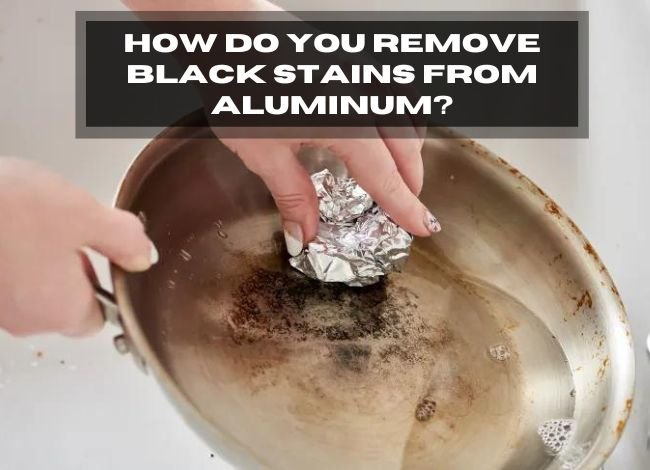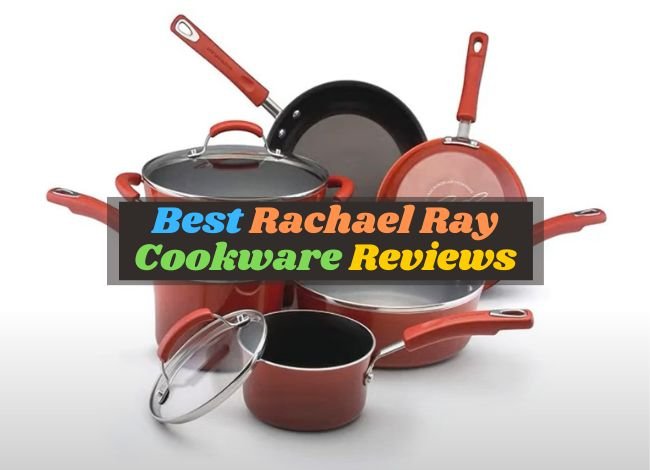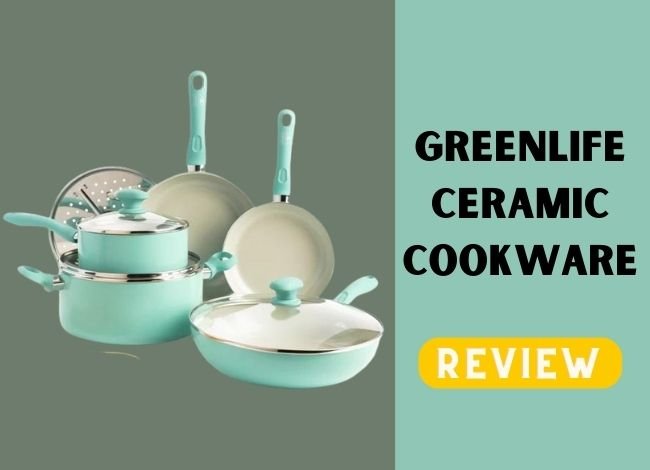Last Updated on January 30, 2024
Black stains are a common issue when dealing with aluminum, whether it’s kitchenware, decorative items, or industrial materials. These stains affect the appearance and can lead to corrosion if not addressed properly. This guide will explore various methods to remove black stains from aluminum surfaces. From household remedies to specialized techniques, we’ll cover all you need to know to keep your aluminum items looking new and prolong their lifespan.
How Do You Get Rid of Black Stains on Aluminium Pans When You Take All This Into Account?
Aluminum pans are prone to black stains due to food residues, heat marks, and oxidation. To tackle these stubborn stains, start by soaking the pan in hot water with a bit of dish soap. This helps loosen the grime. For tougher stains, apply a paste of baking soda and water to the stained areas, and gently scrub with a non-abrasive sponge. Rinse thoroughly and dry. For persistent stains, a mixture of cream of tartar and water can be effective. Apply this paste, let it sit for a few minutes, then scrub and rinse. Regular maintenance and prompt cleaning after use can prevent the build-up of these black stains.
A Similar Question Concerns Aluminium Corrosion and How it Can Be Removed Effectively
Aluminum corrosion manifests as white powdery deposits or pitting on the surface. First, clean the surface with soapy water and dry it thoroughly to remove corrosion. Then, apply a solution of equal parts white vinegar and water. Let it sit briefly before scrubbing it gently with a soft brush. A mixture of lemon juice and salt can be used as a mild abrasive for more severe corrosion. Apply it to the corroded area, leave it for a few minutes, then scrub gently and rinse. After removing the corrosion, it’s important to thoroughly dry the aluminum and apply a protective coating, like a specialized aluminum polish, to prevent future corrosion.
In the Same Way, How Do You Get Stains Out of an Aluminium Sheet?
Removing stains from aluminum sheets requires a gentle approach to avoid scratching the surface. Begin by washing the sheet with warm, soapy water. If stains persist, mix a solution of white vinegar and water (equal parts) and apply it to the stains. Let it sit for a few minutes, then wipe off with a soft cloth. A paste made from baking soda and water can be effective for tougher stains. Apply it on the stain, leave it for 10-15 minutes, then gently scrub gently with a soft brush or cloth. Always rinse thoroughly and dry the aluminum sheet to prevent water spots. Wiping the aluminum sheet with a microfiber cloth can free it from dust and minor stains for regular maintenance.
Is it Possible to Clean Aluminium with White Vinegar?
Yes, white vinegar is an excellent cleaning agent for aluminum. Its acidic nature helps remove oxidation and light stains without being too harsh. Mix equal parts of vinegar and water in a spray bottle to clean aluminum with white vinegar. Spray the solution onto the aluminum surface and let it sit for a few minutes. This allows the vinegar to break down grime and oxidation. Then, wipe the surface with a soft cloth or sponge. You can use undiluted vinegar for tougher stains, but be sure to rinse it off thoroughly to prevent any potential damage. Vinegar is not only effective but also an eco-friendly and cost-effective cleaning solution.
Remove the Black Oxidation from Aluminium Using the Following Procedure
Black oxidation on aluminum is a form of corrosion that needs to be addressed promptly. Start by cleaning the surface with soapy water to remove dirt and debris. Rinse and dry thoroughly. To tackle the oxidation, prepare a solution of equal parts white vinegar and water. Apply this with a soft cloth and gently rub the affected areas. A paste of baking soda and water can be used for more severe oxidation. Apply the paste, let it sit for about 15 minutes, then scrub gently with a non-abrasive pad. Rinse off the paste and dry the aluminum surface completely. After removing the oxidation, it’s advisable to apply a protective coating like aluminum polish or wax to safeguard against future oxidation. Regular cleaning and timely maintenance can significantly reduce the risk of black oxidation on aluminum surfaces.
What is Causing the Blackening of My Aluminium Pans?
Many home cooks face the issue of aluminum pans blackening. This phenomenon typically occurs due to the oxidation process, where aluminum reacts with oxygen in the air or with certain foods, leading to discoloration. Another contributing factor can be the use of high heat, which accelerates the oxidation process. Additionally, washing aluminum cookware in a dishwasher or using harsh detergents can cause darkening and staining. Understanding the cause is the first step in addressing the issue and keeping your aluminum cookware pristine.
What is the Best Way to Get the Black Stuff Out of My Frying Pan?
To remove the black stains from your aluminum frying pan, create a cleaning solution with ingredients like vinegar, baking soda, or lemon juice, known for their natural cleaning properties. Soak the pan in the solution, then gently scrub with a non-abrasive sponge or cloth. For tougher stains, boiling the solution in the pan can be effective. Avoiding steel wool or abrasive cleaners is important, as these can scratch the aluminum surface. Regular cleaning with these gentle methods can keep your pan looking new.
Is it Because Aluminium Polish Turns Black That It Becomes Black?
Aluminum polish turning black is a sign of its effectiveness. When you polish aluminum, the black residue is actually the oxidation being removed from the surface. This residue is a natural byproduct of the cleaning process and indicates that the polish works. To ensure effective cleaning without damaging the aluminum, use a polish specifically designed for aluminum and follow the manufacturer’s instructions. Regular polishing can help prevent future blackening and maintain the shine of your aluminum cookware.
If You Have Discoloured Aluminium Cookware, is it Still Safe to Use It?
Discolored aluminum cookware is generally safe to use. The blackening of aluminum is a surface-level issue and doesn’t typically impact the safety or functionality of the cookware. However, if the discoloration is accompanied by pitting or deep scratches, it may be time to consider replacing the pan. Regular maintenance and cleaning can prevent severe discoloration and extend the life of your aluminum cookware, ensuring its safety and reliability in your kitchen.
Is it Safe to Cook with Aluminium Pans?
Most health authorities consider cooking with aluminum pans safe. Aluminum’s excellent heat conductivity makes it a popular choice for cookware. However, concerns about aluminum leaching into food have been raised, particularly when cooking acidic foods. Most studies show that the amount leached is minimal and not harmful to health. Anodized aluminum pans, which have a hardened surface, further reduce any risk. As with any cookware, using it as intended and following care instructions is crucial for safety.
I was Wondering Which Cleaner is the Most Effective on Aluminium.
When it comes to cleaning aluminum, the most effective cleaners are usually those that are mild and non-abrasive. Homemade solutions like a mix of vinegar and water, or baking soda and water, work well. Commercial cleaners specifically formulated for aluminum can also be effective, but following the instructions and testing a small area first is important. Avoid chlorine bleach and ammonia-based cleaners, as they can cause discoloration and damage. Regular cleaning with these recommended solutions can help maintain the appearance and longevity of your aluminum cookware.
Will Coke be able to remove aluminum stains from surfaces?
Many people are surprised to learn that common household items, like Coca-Cola, can be effective in cleaning tasks. Due to the presence of phosphoric acid, Coke’s acidic properties make it a potential candidate for removing black stains from aluminum surfaces. This method is especially popular due to its accessibility and ease of use. To employ this method, simply pour a small amount of Coke on the stained area and let it sit for several minutes. The acid breaks down the stain, making it easier to wipe away. However, it’s important to rinse the area thoroughly with water afterward to prevent any potential corrosive effects. While effective for light stains, Coke may not be the best solution for more stubborn or extensive discoloration.
What is the best way to clean aluminum that has become discolored?
When aluminum becomes discolored, especially with black stains, it’s important to choose a cleaning method that is both effective and safe for the metal. One of the best approaches is using a mixture of white vinegar and water. Vinegar, a mild acid, is excellent for breaking down stains without causing damage to aluminum surfaces. To use this method, mix equal parts of vinegar and water, apply it to the stained area, and let it sit for a few minutes before scrubbing gently with a soft brush or cloth. Rinse the area thoroughly with water after cleaning. For tougher stains, a paste made from baking soda and water can be applied and left for an hour before washing off. These natural cleaners are effective, environmentally friendly, and safe for most aluminum surfaces.
Aluminum can be cleaned with a variety of chemicals.
Apart from natural solutions, various chemicals can effectively clean aluminum. Commercial aluminum cleaners are specifically formulated to tackle tough stains and discoloration. When using chemical cleaners, following the manufacturer’s instructions and using protective gear like gloves and goggles is vital. For DIY enthusiasts, a solution of cream of tartar and water can be effective. This mild abrasive can help remove stains without scratching the aluminum surface. Apply the paste to the stain, let it sit for a few minutes, then gently scrub and rinse. It’s essential to test any chemical cleaner on a small, inconspicuous area first to ensure it doesn’t damage the surface.
When it comes to cleaning aluminum pots, how do you get rid of black stains?
Aluminum pots are prone to black stains due to regular use and exposure to high heat. To clean these, a slightly different approach is needed. Boiling water mixed with either lemon slices or a few tablespoons of vinegar can be effective. Fill the pot with the mixture and let it boil for about 10 minutes. This process helps loosen the black stains, making them easier to scrub off with a non-abrasive sponge or cloth. For persistent stains, a paste of baking soda and water can be applied directly to the stains, left to sit for a few minutes, and then scrubbed gently. It’s crucial to avoid using steel wool or abrasive scrubbers as they can scratch the aluminum surface.
Conclusion
Cleaning black stains from aluminum surfaces, whether it’s cookware or other items, can be achieved with various methods ranging from household items like vinegar and baking soda to commercial chemical cleaners. The key is to choose a method that is effective yet gentle enough to preserve the integrity of the aluminum. Regular maintenance and immediate attention to spills and stains can prevent the buildup of stubborn discoloration, ensuring your aluminum items remain clean and functional for a long time.




